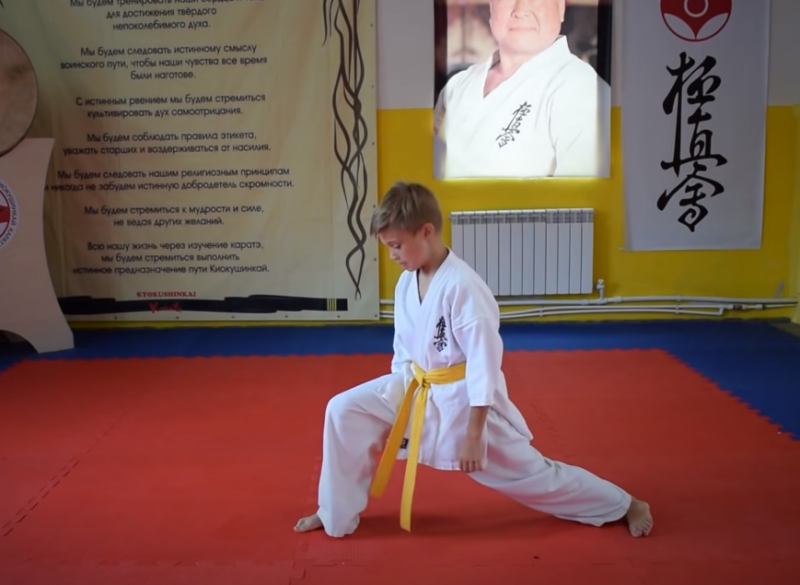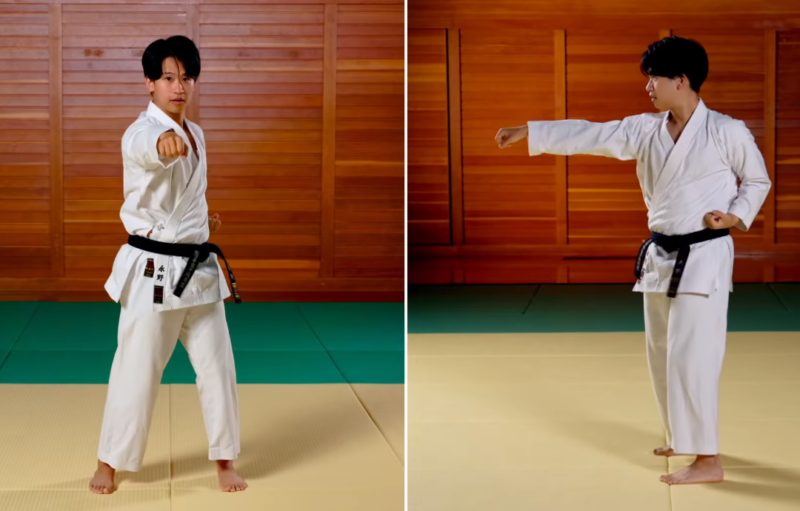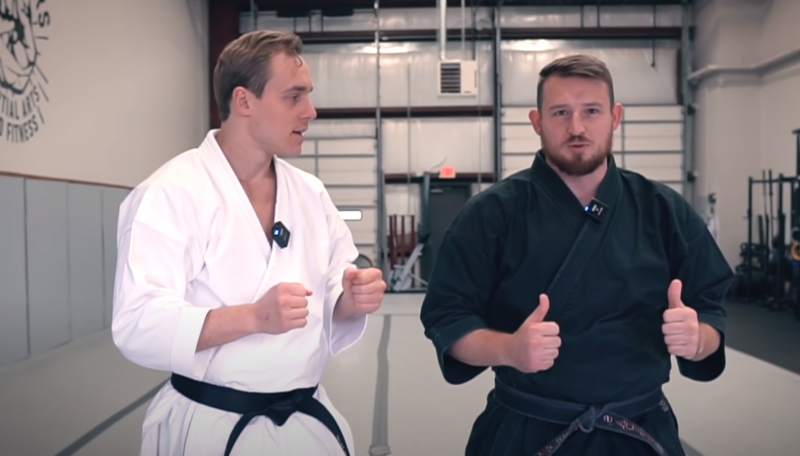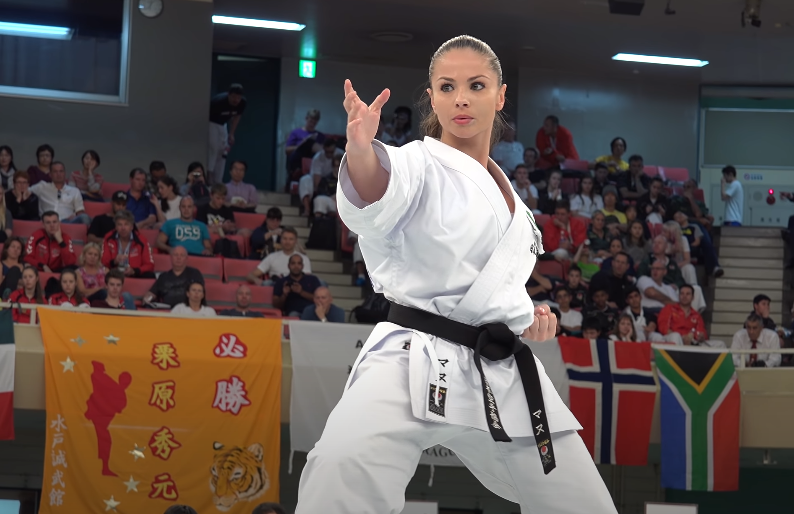In the world of martial arts, there are numerous styles and disciplines that have evolved over centuries. Among these, Karate and Taekwondo stand out as two of the most recognized and practiced worldwide. But what sets them apart?
In this comprehensive guide, we’ll explore the intricacies of these two martial arts to understand their origins, techniques, philosophies, and more.
History and Origins
Karate
Karate, which translates to “empty hand” in Japanese, originates from the Ryukyu Islands, specifically Okinawa, Japan. The martial arts began as a synthesis of indigenous fighting styles and Chinese martial arts, which were introduced to the island through trade and migration.
During its early days, practicing Karate was a secretive affair, especially when the Satsuma clan occupied Okinawa and banned weapons. This prohibition led the Okinawans to develop and refine their unarmed combat techniques.
Taekwondo
Contrary to the deep historical roots of Karate in Japan, Taekwondo is a relatively modern martial art from Korea. The name itself translates to “the way of foot and fist,” emphasizing its focus on kicks and punches.
After the Korean War, there was a move to unify various Korean martial arts traditions into a single national sport. In 1955, the name “Taekwondo” was officially adopted, and the art quickly spread worldwide, symbolizing Korean national pride and spirit.
Philosophy and Principles

At its core, Karate is more than just a method of self-defense. It embodies a philosophy of self-improvement, discipline, and respect. The ‘Dojo Kun’ is a set of principles recited in dojos (training halls) worldwide. They emphasize character, sincerity, effort, etiquette, and self-control.
These principles are not just about becoming a better fighter, but also about becoming a better person.
Similar to Karate, Taekwondo isn’t just about kicks and punches. It’s built on a foundation of five tenets: courtesy, integrity, perseverance, self-control, and indomitable spirit. These tenets guide practitioners in their daily lives and martial journeys.
Taekwondo emphasizes moral development as much as it does physical prowess, ensuring that its students grow holistically.
Part of this holistic growth also involves understanding and respecting the traditions of Taekwondo, such as the proper way to tie a Taekwondo belt, symbolizing the practitioner’s rank and journey.
Techniques and Forms
| Martial Art | Primary Components | Description |
|---|---|---|
| Karate | Kata and Kumite |
|
| Taekwondo | Poomsae and Sparring |
|
Grading and Progression
| Martial Art | Ranking System | Description |
|---|---|---|
| Karate | The Kyu and Dan System | In Karate, practitioners progress through various ranks, symbolized by colored belts. These ranks are split into two main categories:
Each rank requires mastery of specific techniques, kata, and sometimes even sparring to progress. |
| Taekwondo | Geup and Dan | The ranking system in Taekwondo is somewhat similar to that of Karate. Beginners start at the Geup level (colored belts) and work their way down from 9th Geup to 1st Geup.
Upon reaching the 1st Geup, practitioners transition to the Dan system, starting at 1st Dan. The Dan rankings in Taekwondo also signify a practitioner’s mastery level, with requirements including specific Poomsae, sparring, and sometimes board-breaking techniques. For a more in-depth exploration of the journey through the ranks, discover the intricate stages and symbolism of each belt in our detailed guide on Taekwondo’s belt system. |
Self-Defense Efficacy

Karate places a strong emphasis on practical self-defense. Its techniques encompass a wide range of strikes, blocks, and even joint locks. The stance and movements in Karate are designed for stability, power generation, and quick retaliation.
Moreover, certain styles focus intensely on practical bunkai (application) of kata movements for real-life self-defense scenarios. The effectiveness of Karate as a self-defense tool has been demonstrated countless times in real-world situations and in combat sports arenas.
Taekwondo‘s emphasis on high and rapid kicks offers practitioners an advantage in maintaining distance from potential threats. A well-executed Taekwondo kick can be a powerful deterrent in a self-defense scenario.
Additionally, the mobility and agility taught in this martial art provide practitioners with the ability to evade and counter-attack effectively. While critics argue that the high kicks are less practical, a trained practitioner possesses a variety of tools, including low kicks, punches, and even some throws and sweeps.
Health and Fitness Benefits

Karate: Full-Body Workout and Mental Strength
- Holistic workout: Engages almost every muscle group, improving strength, flexibility, and cardiovascular health.
- Kata practice: Combines interval training and meditation, requiring physical exertion and mental concentration.
- Mental benefits: Develops discipline, focus, mental well-being, stress reduction, and increased self-confidence.
Taekwondo: Flexibility and Cardio Excellence
- Focus on kicks: Enhances leg strength and flexibility.
- Intense cardiovascular workout: Promotes stamina and endurance due to the dynamic nature of techniques.
- Muscle memory and coordination: The repetitive practice of kicks and Poomsae improves these aspects.
- Mental benefits: Enhances concentration, discipline, and overall mental health and resilience through the practice of its tenets.
Cultural and Regional Influences
While Karate has its roots in Okinawa, it was heavily influenced by Chinese martial arts. Various styles of Karate emerged, each with its unique flavor, depending on the region and the specific Chinese influences.
For example, Shotokan Karate, developed in mainland Japan, has long stances and powerful techniques, while Goju-Ryu, which retains more of its Okinawan flavor, incorporates softer, circular movements.
Taekwondo, deeply ingrained in Korean culture, showcases the nation’s history and spirit. The high-flying kicks are said to be inspired by the mountainous terrains of Korea, enabling fighters to defend against mounted invaders.
Additionally, the Poomsae in Taekwondo often represent elements of Korean philosophy, like the Taegeuk, which symbolizes the balance of Yin and Yang.
Global Recognition and Impact

Karate’s global journey began in the early 20th century when masters like Gichin Funakoshi started introducing it to mainland Japan. From there, it rapidly spread worldwide, thanks in part to the American soldiers stationed in Japan during and after WWII.
Today, with movies, competitions, and the inclusion of Karate in the Olympics, its global footprint is undeniable.
Taekwondo’s rise to global prominence was meteoric. With the establishment of the World Taekwondo Federation (now World Taekwondo) and the art’s inclusion in the Olympics, it became one of the most practiced martial arts worldwide.
Its appeal lies not just in its athletic and aesthetic kicks but also in its embodiment of Korean culture and philosophy.
FAQs
Are there any age restrictions for starting Karate or Taekwondo?
There are no strict age restrictions for starting either martial art. Many schools and dojos offer classes for children, teenagers, and adults, so people of various ages can begin training.
Do I need to have prior martial arts experience to start Taekwondo or Karate?
No prior martial arts experience is required to start either Taekwondo or Karate. Beginners are welcome, and instructors often tailor training to suit the skill levels of new students.
Can I practice Karate or Taekwondo for self-defense purposes?
Yes, both offer valuable self-defense skills. They teach effective techniques and strategies for defending oneself in real-life situations, in addition to the physical and mental benefits they provide.
What is the difference between “Kyu” and “Dan” ranks in Karate and Taekwondo?
In both Karate and Taekwondo, “Kyu” ranks refer to colored belt levels, with higher numbers indicating lower ranks. “Dan” ranks, on the other hand, represent black belt levels, with higher numbers indicating higher mastery and expertise.
Are there any equipment or uniforms required for Karate and Taekwondo practice?
Yes, practitioners typically wear specific uniforms called “gi” or “dobok” in Karate and Taekwondo, respectively. Additionally, some schools may require protective gear such as gloves and sparring equipment for safety during training.
How long does it take to achieve a black belt in Karate or Taekwondo?
The time required to achieve a black belt varies depending on individual dedication, training frequency, and the specific martial arts school’s curriculum.
On average, it may take several years of consistent training and demonstrating proficiency to earn a black belt in either martial art.
Summary
Having explored and trained in both Karate and Taekwondo, it’s clear that each has its unique strengths, history, and techniques. I’ve learned a lot during my research and training, and I hope this article has shed some light on the main differences and nuances between these two popular martial arts.
If you’re considering taking up either, I’d encourage you to give it a go – both offer great lessons in discipline, fitness, and self-defense.
